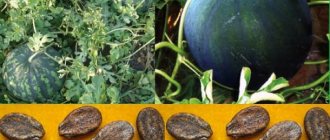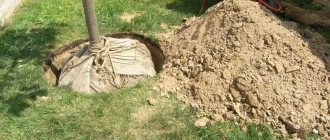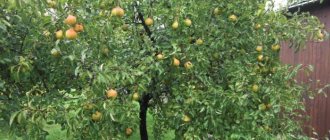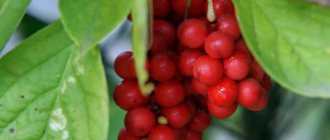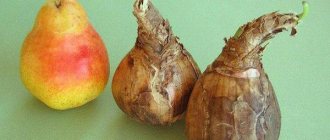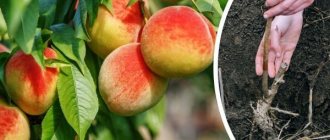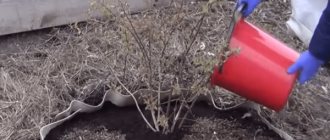Options for future processing of pulp for storage
The peeled pieces of pumpkin can be cut even finer, grated, or left as is, depending on what you are going to do next.
Peeled pieces of pumpkin can be used for cooking
- If you do not plan to eat the pumpkin right away, place half of it in the refrigerator along with the seeds, where it can lie for several days. By wrapping half of the pumpkin in cling film, you can store it in the refrigerator for some time
- If you need to save the peeled pumpkin pulp, remove the core with seeds and put the vegetable in the refrigerator.
The wilted edges can be easily cut off. It is not recommended to use cling film, as mold appears on the pumpkin. - You can also store peeled pumpkin in the freezer, after placing it in a plastic bag. However, you should know that frozen pumpkin can be cooked without defrosting. Pumpkin can be stored frozen
Further use
After heat treatment, the pieces remaining after cooking the dish are stored well in the refrigerator, but no more than a week:
- The vegetable is cut into cubes, placed in portions in plastic bags, and placed in the freezer. When frozen, the shelf life increases to a year. The taste of such pumpkin is practically no different from fresh one.
- To make cooking easier, the leftovers are pureed and stored in the freezer. As needed, the product is taken out and added to porridges, soups and other dishes.
- If you plan to use the vegetable as a basis for fresh juice, squeeze a small amount of lemon juice onto the pulp. Moreover, the beneficial properties of such a product last only 2-3 days at a temperature of 0…+4°C.
Pumpkin dessert will be tastier if you add a little honey instead of sugar. The pleasant aroma and taste will go well with the soft and juicy pulp.
Storage rules
Pumpkins of almost all varieties are stored until spring in the basement at a temperature of +12...+15°C. They are placed on racks and a bed of straw.
In a city apartment there are 2 storage options: on a glazed balcony or loggia and simply on the floor. In the first case, the pumpkin is suitable for consumption for 5-6 months at a temperature not lower than +2°C and air humidity not higher than 75–80%. In this case, the following conditions are met:
- the fruits are covered with breathable, opaque material to prevent sunlight from entering;
- pumpkins are not placed on a cement floor, linoleum, plastic (boards, plywood, thick fabric are more suitable);
- with the onset of severe frosts, vegetables are wrapped in a blanket or other insulation.
When stored on the floor, vegetables are isolated from each other and protected from sunlight. This way they will not lose their quality until almost summer, if the skin has not been damaged.
Important! If the humidity is high, the pumpkin will quickly begin to rot.
Keep the peeled pumpkin in the refrigerator for no more than two weeks, after greasing the cuts with sunflower oil and wrapping the vegetable in cling film. The product can be stored in the freezer for up to 12 months.
How to quickly and efficiently remove the peel?
To peel the pumpkin, you can use the most common method. We cut the product into two parts, remove the seeds with a spoon or a special spatula. Next, we divide the fruit into several oblong strips or pieces, each of which is separately peeled.
We cut the purchased pieces of pulp as needed according to the recipe.
Tip: Simply mash the tender pumpkin pulp with your fingers while holding it in your hands, which will change the structure of the product. To prevent this from happening, place strips or pieces of the vegetable with the peel on the table, take an extremely sharp knife and separate the pulp from the substrate, and not vice versa.
If you simply need to cut the pumpkin for future storage or save its pulp in the form of large pieces, the above method will not work. In this case, it is best to clean the fruit as follows:
- We take a pre-cooked pumpkin and cut off two centimeters of bark and pulp from each pole of the fruit.
These pieces can be thrown away. - Next, remove the seeds so that they do not fall out during the next cleaning process. To do this, you can use a spoon, preferably a wooden one, with a long handle. Manual cleaning is also allowed; it is even more effective.
- We place the cleaned workpiece on a cutting board, placing it on one of the poles so that the vegetable does not wobble or slide. We take a vegetable knife or a device for peeling potatoes and use it to peel the fruit, removing thin strips of peel.
The disadvantage of the extreme approach is that from time to time it is impossible to quickly get to the pulp.
If the bark is extremely thick, it will take a lot of time to actually remove it.
But if the fruit was extremely fresh, with a narrow skin, the manipulation will take almost a few minutes, after which all that remains is to cut the pulp as needed.
An additional advantage of the method is that it manages to save a huge part of the pulp.
Useful properties of pumpkin
Before you peel the hard skin of the pumpkin and prepare a delicious dish from it, you need to learn about the beneficial properties of this vegetable and its contraindications. This is necessary to ensure that eating pumpkin does not cause negative consequences and does not affect your health.
This orange vegetable includes a number of important substances that ensure the normal functioning of all body systems.
Among the most important it is worth noting the following:
- vitamins A, B, E, PP, F, D, C;
- magnesium;
- iron;
- potassium;
- calcium;
- cellulose.
All these beneficial substances help cope with diseases of the gastrointestinal tract and improve digestion. In addition, pumpkin can become an indispensable product in the treatment of diabetes, atherosclerosis, kidney disease and the cardiovascular system.
Among the negative factors affecting the human body, it is worth highlighting the possibility of allergic reactions, bloating, and colic. This vegetable should not be consumed by people suffering from low acidity of gastric juice and severe diabetes.
Short heat treatment
It is better to soften the hard, woody peel by heating it. Pierce the prepared pumpkin with a fork, skewer or narrow knife on several sides. Place the product in the microwave and set the switch to maximum.
We suggest you read: Is it possible to freeze defrosted fish?
After two minutes, remove and, while the pumpkin is still warm, cut off the skin. Pre-divide a large vegetable into parts.
Please note that for thin-skinned and juicy varieties, one minute is enough for the shell to become more pliable for removal.
You can also place the pumpkin in an oven preheated to 150°C for 15–20 minutes. Be careful not to overcook the fruit, otherwise the pulp will be baked and you will have to immediately use it for cooking.
Immediately after heat treatment, the peel from the pumpkin can be removed with a regular grater.
How to properly cut a pumpkin
First, the pumpkin should be washed thoroughly, because... while growing, she lay on the ground. Dirty peels may contain roundworm eggs or residues of chemical fertilizers. It is recommended to cut vegetables with rough peel in the following ways:
- Soak. The melon is placed in a deep container and filled with water. To ensure that the fruit is completely immersed in the liquid, pressure is placed on it. After 10-12 hours, it is removed, wiped with a dry cloth and peeled.
- Cooking. If you don’t have time to wait, you can cook the pumpkin. You will need a large saucepan of boiling water. The vegetable is placed in boiling water and kept on fire for 15-20 minutes. Then it is filled with cold water and left for 5-7 minutes. The fruit prepared in this way is easy to clean.
- Slicing. A very hard pumpkin is first cut into pieces. It is placed on a cutting board and cut in half in one motion using a heavy knife. Then the halves are divided into 4 and 8 parts. They are peeled and cut into cubes.
On a note!
The extracted seeds are cleared of fibers, washed and laid out in a thin layer on a saucer. They are dried at room temperature for 14-20 days. Pumpkin seeds can be used as food or stored until spring as seed.
When slicing melons, you should adhere to the following rules:
- The pumpkin placed on the cutting board should be held with one hand.
- The knife must be well sharpened. Otherwise, it may slip and hurt your fingers.
- The pumpkin quarters, peeled and seeded, are cut into longitudinal bars 1.5-2 cm thick. The resulting strips can be left in this form. If desired, they are cut crosswise into identical cubes, the size of which depends on the recipe. The smaller they are, the faster they will cook.
- To save time, the strips need to be stacked on top of each other and cut at the same time.
Small fruits
Small fruits, the diameter of which does not exceed 10–15 cm, are washed under the tap in the kitchen sink or in a basin of water. After cleaning them from dirt and dust, dry them using thick paper napkins or a clean cotton towel. For specimens that fit in the palm of your hand, this is enough to move on to the next stage.
If the pumpkin cannot be held with one hand or it has an awkward shape, first cut it into two halves. Divide a vegetable that has a pronounced relief into existing segments, this will make it easier to peel. It is most convenient to cut a segmented pumpkin into crescents, and then peel each piece separately
Release from seeds
Any housewife must understand that not a single pumpkin dish is prepared with seeds. They, along with the fibers, must be constantly removed. There are special rules that can teach anyone how to clean the inside of a pumpkin.
The process is quite simple and does not involve the use of any complex devices or equipment. Everything is as simple as possible. True, there are two cleaning options:
1) Whole fruit. This is done when the pulp, together with the peel, participate in the cooking process and act as an improvised utensil. In addition, once a year a whole pumpkin is cleaned for Halloween.
2) Separate parts. This option is convenient for preparing dishes in which the pulp will then need to be chopped.
Cleaning a pumpkin is not at all difficult, for this you need:
- Wash the vegetable well so that no dirt remains on it.
- Using a sharp knife, cut off the top part near the tail.
It is better to hold the blade at an angle so that, together with the “lid,” you can partially remove a small layer of pulp. - Next, using a regular tablespoon, carefully scrape out the fibers with seeds, occasionally pulling them out.
The resulting workpiece can be further used for its intended purpose.
How to prepare pumpkin for freezing
A properly cut pumpkin does not take up much space in the freezer. For quick freezing, only ripe fruits that are not affected by rot are selected. The pulp is prepared in the following ways:
- prepare puree;
- cut into small cubes;
- grind on a grater.
The first option for preparing vegetables allows you to use the pulp right away. Other methods require preliminary heat treatment, because the pulp is kept fresh. By using the appropriate freezing method, you can prepare healthy dishes from the juicy pulp all winter. The shelf life of frozen vegetables is limited, so the date of preparation should be indicated on the packaging.
How to make pumpkin puree correctly
The shelf life of pumpkin puree in the freezer is no more than 10 months. It can be immediately added to casseroles, pies, cereals and other dishes. The semi-finished product is prepared as follows:
- The melon is cut in half and freed from seeds.
- To make puree, the pulp is first prepared in one of the following ways: boiled, baked, steamed or microwaved. The peel does not need to be removed.
- To obtain puree you will need a blender, fork or masher. The pulp is scooped out with a spoon, then kneaded until a homogeneous mass is obtained.
- The puree is distributed into containers: containers, special forms, plastic glasses. The filled container is placed in the freezer.
Important!
If the finished puree is stored in a container with a lid, it should be taken into account that when frozen, the mass will increase in volume. Therefore, there is no need to fill the container to the very edge.
Freezing fresh pumpkin
Melon can be frozen raw so that you can later prepare various dishes from it. This semi-finished product makes delicious pancakes, pies, porridges and side dishes. The preparation is made in this way:
- The pulp is cut into pieces or grated.
- The finished product is dried with a towel, placed on a tray and sent to the freezer.
- After 2-3 hours, the frozen pulp is put into bags, then returned for long-term storage.
Plastic bags or food containers are suitable as containers. When filling the container, leave 1.5 cm of free space from the top. Before sealing the bag, you should try to get as much air out of it as possible. It is advisable to make small portions of grated vegetables - up to 500 g in each package. Raw frozen food can be stored for up to 12 months. Butternut squash can be used without first thawing. The firm pulp is added to hot sauce or soup.
Many varieties of pumpkin grow very large. Therefore, it is difficult to eat a vegetable at one time, even if there are fans of such dishes in the family. Fruits often deteriorate when kept in a damp basement for a long time. The easiest way to preserve a delicious vegetable is to freeze it. The right approach allows you to obtain a useful product that is ready for quick use. Pumpkin dishes can be prepared throughout the year.
Thanks to the vitamins A, C, E, group B, PP contained in pumpkin, microelements (potassium, magnesium and others), fiber, pectin, it rightfully occupies a leading place in terms of usefulness in human nutrition. It is suitable for children, including infants, the elderly, and pregnant women. The unique composition of the pulp makes the vegetable useful for preventing the development of cardiovascular diseases; it has a diuretic, antiemetic effect, and helps fight toxicosis of pregnant women and insomnia. The vegetable helps with anemia and exhaustion of the body, liver diseases and many other diseases. Its seeds are no less useful. Regardless of the part, the pumpkin should be properly cleaned before consumption.
Preparing vegetables for processing
Regardless of the type of fruit and its purpose, the preparation in all cases is the same.
It involves performing the following manipulations:
- We clean the surface of the pumpkin from dirt and leaves. We carefully rinse under the tap, rubbing with a sponge or cloth. It is not necessary to soak the fruit; it may lose its purity of taste, and in some species the peel becomes very soft, making it difficult to peel the fruit without damaging the pulp.
- Be sure to wipe the surface with cloth or cardboard napkins. We wait until the pumpkin is one hundred percent dry.
- We prepare the necessary tools for cleaning the vegetable, containers for storing seeds (especially if they are planned to be dried), peel and pulp.
We invite you to familiarize yourself with the correct arrows on trousers. How to iron trousers with creases?
If small spots of rotting are visible on the surface of the peel, it is recommended to cut them out in advance (even at the stage of removing the leaves).
Otherwise, during cleaning, tiny pathogenic organisms will get onto the pulp.
In cases where the lesions are impressive and their removal leads to the need to get to the core, the resulting holes do not need to be plugged.
You just have to be extremely careful when washing the surface of the pumpkin.
Procedure for cleaning a pumpkin
- First of all, the vegetable must be washed well.
- Then use a wide, long knife to cut off the lid and bottom.
This will help give the fruit stability during further processing. First, cut off the lid and bottom. - Cut the pumpkin into two halves from the lid to the bottom.
- Use a spoon to scoop out the seeds along with the fibers.
Set aside the seeds. Then they need to be freed from fibers and dried. It is convenient to remove seeds and fibers with a spoon - Place the pumpkin cut side down on a cutting board and use a planing motion from top to bottom to cut off the skin.
Using a sharp knife, trim the peel from top to bottom. - If the pumpkin is very large and the skin is very hard, the fruit can be cut into quarters or slices. Focus on what size pieces you are most comfortable working with.
- Butternut squash is cut crosswise rather than lengthwise.
First, the upper part of the half is “planed”, then the lower half is turned over and processed. Cut the butternut squash crosswise into two pieces
Reference. To make the process easier, some housewives advise pre-soaking the vegetable overnight in cold water, then the skin will come off faster.
What you need to cut a hard pumpkin
Heavy knife
Similar to a cleaver or a broadsword, well sharpened, such a knife in one fell swoop will help solve the first problem - cutting the melon in half. After this, you can remove the seeds with a spoon or scraper.
You can also use a heavy knife to divide the pumpkin halves into slices, cutting it lengthwise or crosswise, depending on the shape.
Peeler
A potato and carrot peeler can do an excellent job of removing peels if you choose a larger one.
Like any other kitchen utensil, a vegetable peeler can be made of plastic or metal, with a narrower or wider blade, the length of which also varies.
So, we need a metal device, since the plastic handle is too fragile. Depending on which option (vertical blade or horizontal) we are more accustomed to working with, we choose a vegetable peeler.
The junction with the pulp is more pliable, but dragging a knife along a hard peel is a thankless task. When cooking, you still have to remove it, and you can also cut yourself.
small knife
If the pumpkin you come across is completely stubborn and the peel is not just hard, but literally wooden, you won’t be able to remove it with a vegetable peeler.
In this case, a small knife for cutting meat will come in handy. It should fit comfortably in your hand and be sharp enough. With this we will first remove the crust and then we can cut the pumpkin into cubes.
Cutting board
We choose it to match the vegetable. Anything that's not big enough will just get in the way, so size matters! Also, the board should be heavy and thick - in case the cleaver knife comes off. Isn’t it important for you that your furniture is reliably protected?!
Below we will give several options for cutting pumpkin vegetables, but since everyone’s varieties are different and they are united only by unprecedented rigidity, then in any case you will have to experiment in search of the optimal method.
With nutmeg
To clean a pear-shaped pumpkin, it is recommended to use a cross cut and remove the peel alternately from the top and bottom. The skin of nutmeg varieties is thin, so the cut should be 0.5–1 cm.
if you need circles or cubes of pulp for cooking, then you should immediately cut the fruit into rings and peel off the shell in a circle from each of them with a small knife.
The fastest way is to cut off the butternut squash bark with a triangular potato peeler.
There are two peeling methods that will help you quickly peel your butternut squash.
What kind of fruit is this vegetable
Pumpkin has been known for more than 5 thousand years. The place of origin is Central and South America, where the ancient Indians began to use it. The fruit was brought to Russia in the 16th century.
The nutritional benefits of pumpkin can hardly be overestimated
There are many varieties of pumpkin. They differ in color and size, shape and purpose. There are decorative varieties whose pulp is inedible, but the unusual shape and color of the fruit can decorate a garden plot or winter garden. Some varieties are grown for livestock feed or for seeds. Currently, three species are most often cultivated:
- large-fruited;
- hard-barked;
- nutmeg.
Large-fruited
The name of these varieties speaks for itself. The fruits are large in size and weight, and they are also the sweetest. In some varieties, the sugar content reaches 15%, which is more than the sweetest watermelon. The skin of these pumpkins is quite thin, and they are stored well in a city apartment.
The weight of this species can reach a hundredweight; there is a known case of growing fruits weighing more than 500 kg. The fruits are usually round or oblong. Inside there is a large cavity with seeds.
Large-fruited varieties include “Stofuntovaya”, “Titan”, “Kupchikha”, “Teschenka” and others. Varieties are resistant to low temperatures.
Some pumpkin specimens can reach several hundred kilograms
Hardbark
It is smaller in size than the large-fruited one and has a very hard peel, more like a nut shell. This species matures quickly. Already at the end of August - beginning of September they can be eaten. Hard-bark pumpkin seeds are the most delicious.
In addition to being eaten, they are also valuable as raw materials for making dishes. That's exactly why housewives don't like to deal with them so much - the hard shell - has found application in this area. The dishes made from it are light, durable and environmentally friendly.
The flesh of hard-rind pumpkins is looser and can be quite rough. There is a variety called “Spaghetti” with fibrous pulp that actually looks like spaghetti. Another interesting variety is gymnosperm. Pumpkin seeds of this variety do not have an outer hard shell and are very tasty. This variety is not stored for a long time due to the fact that the seeds can germinate inside the pumpkin itself.
When stored for a long time, the skin of the pumpkin thickens and hardens.
Muscat
This pumpkin is also called butternut. It has a bottle or pear shape. Almost all of it consists of bright orange pulp with a nutty flavor, dense and oily. There are few seeds and they are located in a small cavity in the thickened part of the fruit. Butternut squash is considered the most delicious and vitamin-rich of all types.
The dense, buttery flesh of butternut squash has a nutty flavor.
Its pulp is quite sweet, the sugar content can reach 11.5%.
This species belongs to the mid- and late-ripening species; it requires a warm climate for ripening. But there is nothing to worry about if the vegetable did not have time to ripen in the garden, it will successfully do so during storage.
Did you know that cucumbers, zucchini and squash also belong to the pumpkin family. These vegetables are eaten unripe; when ripe, they have hard seeds, thick skin and more fibrous pulp.
The housewife's headache is how to peel a pumpkin. This process causes especially many problems in winter, when the skin hardens even more due to long storage. But we are not used to retreating.
Fresh, but with thick, tough skin
If you have to deal with hard-barked pumpkins, the skin of which is quite dense, you need to arm yourself with a very sharp knife and, for convenience, cut the fruit not into halves, but into quarters or even individual pieces or segments. After this, you can cut off the peel.
It is convenient to cut some varieties of pumpkin into segments before cleaning
The easiest way to cut a pumpkin into halves or quarters is to use a wide saw blade. I was convinced from my own experience that this is an indispensable thing for processing hard-skinned fruits.
What you need to carve a hard pumpkin
Pumpkin varieties suitable for long-term storage are distinguished by their rough skin. Sometimes it is as hard as a nut shell. During long-term storage, the peel hardens even more. Cleaning such a vegetable is very difficult and requires significant physical effort. Large-fruited varieties are especially difficult to cut. To cut hard-barked melon, you will need the following kitchen tool:
- cutting board;
- small knife;
- vegetable peeler;
- metal spoon or scraper;
- massive knife.
Cutting board and large knife
Using a cleaver knife, you can cut the melon in half in one fell swoop. It is convenient to remove the fibers with seeds with a metal spoon or scraper. To make it easier to cut the vegetable into pieces, you first need to divide the halves into small chunks. They are cut lengthwise or crosswise using a heavy knife. You should act with extreme caution, because... It is easy to get hurt with a sharp bladed weapon.
Important!
Before cutting the melon vegetable, you should make sure that its position is completely stable.
Pumpkin is cut on a cutting board. It is chosen according to the size of the vegetable. It won't fit on a board that is too small. The fruit should lie completely on a flat surface. For cutting, take a fairly large, thick and heavy board. In this case, the furniture will be reliably protected even if the knife comes off. Do not try to cut the fruit with one hand, holding it at an angle or hanging.
Old pumpkin (after storage) with hardened skin
Pumpkin that has been stored for a long time is difficult to clean. To make cutting the peel faster and easier, you can cut the fruit in half or into 4 parts, remove the seeds and pulp, and then soak it overnight in cold water. In the morning, the peel can be cut off with a knife.
The knife must be held correctly so that its blade is directed strictly towards the cutting board
Before peeling a pumpkin with a hard and old skin, you can cut it, remove the pulp and seeds, and then pierce it with a knife or toothpick in several places and put it in the microwave for 2 minutes, turning it on at maximum power. After this pre-treatment, the peel will become softer.
I cut off the peel on old pumpkins only after preliminary heat treatment. It’s convenient to heat the fruits in the microwave, but it broke for me, so I put the cut pumpkin in the oven and bake it for 3 minutes at 180°C, and then take it out and cut off the softened skin.
We suggest you read How to clean gold at home quickly
How to properly cut a pumpkin
Soak
For a number of varieties, soaking overnight is suitable. Fill the pumpkin with cold water, be sure to put pressure on top so that it is completely submerged, and let it stand for 10 to 12 hours.
After that, we wipe it and calmly peel it as if it were any of the soft varieties.
Cooking
If the pumpkin is small but stubborn, and you need to cook it urgently and there is simply no time to wait, then another, exactly the opposite method of cleaning will do.
Place it in boiling water and keep it on the fire for 15 minutes. Then pour in cold water like a boiled egg, wait another 5-7 minutes to cool, then drain and clean. In this case, the crust will fall off on its own, so there will be no difficulties.
Slicing
If the pumpkin in front of us is very hard, we need to cut it first. To do this, place it entirely on a cutting board and in one movement, but slowly and carefully, cut it in half.
Then we divide it into quarters and eighths, which we can then peel with a small knife or vegetable slicer, as described above. After this, cut the pumpkin into cubes.
So, in order to cut a pumpkin if it is tough, in addition to patience and the desire to do it at all costs, you must have the right equipment and skills.
We have no doubt that you have all this, and perhaps there is a secret way to cut hard melons! Share in the comments: do you know such magical methods?
Subscription to the portal “Your Cook”
To receive new materials (posts, articles, free information products), enter your name and email
Many varieties of pumpkin have a very hard skin. Sometimes it is so thick that all that remains is to chop it. How to quickly and easily cut a pumpkin if it is tough? Peeling and cutting the pulp will not be a hassle if you use the recommended methods. Not every tool will cope with the task, so you should listen to the advice of experienced chefs who will tell you how to cut the vegetable. In order not to cut yourself and spoil the delicious fruit, you need to follow simple rules.
It is necessary to take into account the variety
Currently, there are many types of pumpkin, divided into three main types.
- Hard-bark pumpkins. The hardness of the peel is reminiscent of tree bark, which makes cleaning very difficult and requires serious physical effort.
These pumpkins ripen later than all others and are famous for the most delicious seeds. Traditionally, they have tasty, sugary and aromatic pulp.Hard-barked pumpkins are very difficult to peel.
- Large-fruited varieties can delight with their size.
Processing such pumpkins takes a lot of time, but they have the sweetest pulp, comparable to watermelon. The skin of such pumpkins is significantly softer than that of representatives of the hard-skinned family. Pumpkins belonging to large-fruited varieties tolerate low temperatures well and can be stored for a long time in the conditions of an ordinary apartment. Large-fruited bush pumpkins can reach gigantic sizes - Muscat varieties are grown mainly in the southern regions.
They are often harvested immature, before the first frost. The peel is the easiest to peel, and the flesh is juicy and crisp. Pumpkins belonging to these varieties are often consumed raw, used for making salads.Butternut squash is grown in warm climates
Pumpkin varieties are also divided into winter and summer.
- Pumpkins that ripen in summer have the narrowest skin and tender flesh.
- Winter varieties are most suitable for long-term storage. Their peel is much rougher and the flesh is harder.
Features of pumpkin, popular varieties
Pumpkin is called the queen of the vegetable garden. It contains a huge amount of useful substances. The varietal diversity of this crop is amazing. Depending on the main characteristics, all pumpkins are usually divided into three main groups:
- nutmeg;
- hard-barked;
- large-fruited.
Butternut squash is the sweetest. The fruits most often have an elongated shape. They have thin skin that is easy to peel. The most popular varieties from this group: Cello, Spanish guitar, Muscat de Provence, Vitamin.
Butternut squash is easy to peel
Large-fruited pumpkins are large in size, but their skin is relatively thin. If the fruit is fresh, it can be easily peeled with a knife after cutting it into pieces. This group includes varieties such as Russian porridge, Titan, Gigant.
The peel of large-fruited pumpkins is often thin and quite amenable to cutting.
Hard-barked pumpkins are difficult to peel. Their peel is so dense that it has to be softened first in order to be able to work with a knife. Hard skin protects the fruit from damage and rotting. Hard-barked varieties are stored for a long time and can easily be transported over long distances. Some of the most prominent representatives of this group: Kroshka, Candy, Champagne Pastille.
Hard-barked pumpkins require the use of tricks when peeling; even a knife will not easily handle them.
To clean or not to clean
For housewives wondering whether it is necessary to peel vegetables, there is good news: it is not necessary. It all depends on the dish you are going to prepare from it. And you can prepare many such dishes, from the well-known millet porridge, to filling for pies, salads and meat dishes.
The skin of baked pumpkin peels off easily after cooking.
You can simply bake the pumpkin in the oven, sprinkle it with sugar or water it with maple syrup, you can stew it in the oven on a baking sheet, adding a little water, you can grate it - in all these cases there is no need to remove the skin at all. When baked or stewed, it will easily come off after cooking; just throw away any remaining grated crust. There are recipes when dishes are prepared in a whole pumpkin; here there is no question of cleaning.
Cooking in a pumpkin eliminates the need to remove the hard skin
Drying pumpkin seeds in the oven
You can dry pumpkin seeds in the oven as follows:
- First you need to bring the temperature in the oven to 60-80 degrees.
- Then grease a wide baking sheet with vegetable oil and place the seeds, dried after washing, on it.
- The baking tray must be placed strictly in the middle of the oven.
- Drying the seeds in the oven will take approximately 20-30 minutes. During this time they need to be stirred periodically.
After cooking, it is better to taste the seeds: they should not be wet or crunchy on the teeth.
After this procedure, pumpkin seeds can be stored for quite a long time. It is recommended to put them in a cloth bag and keep them in a dry and dark place.

